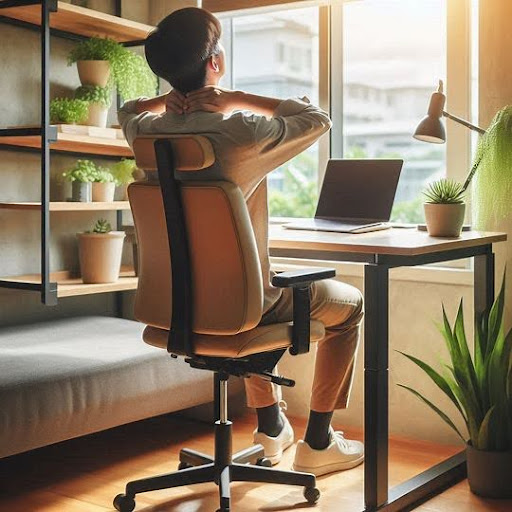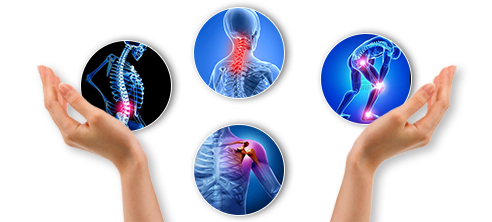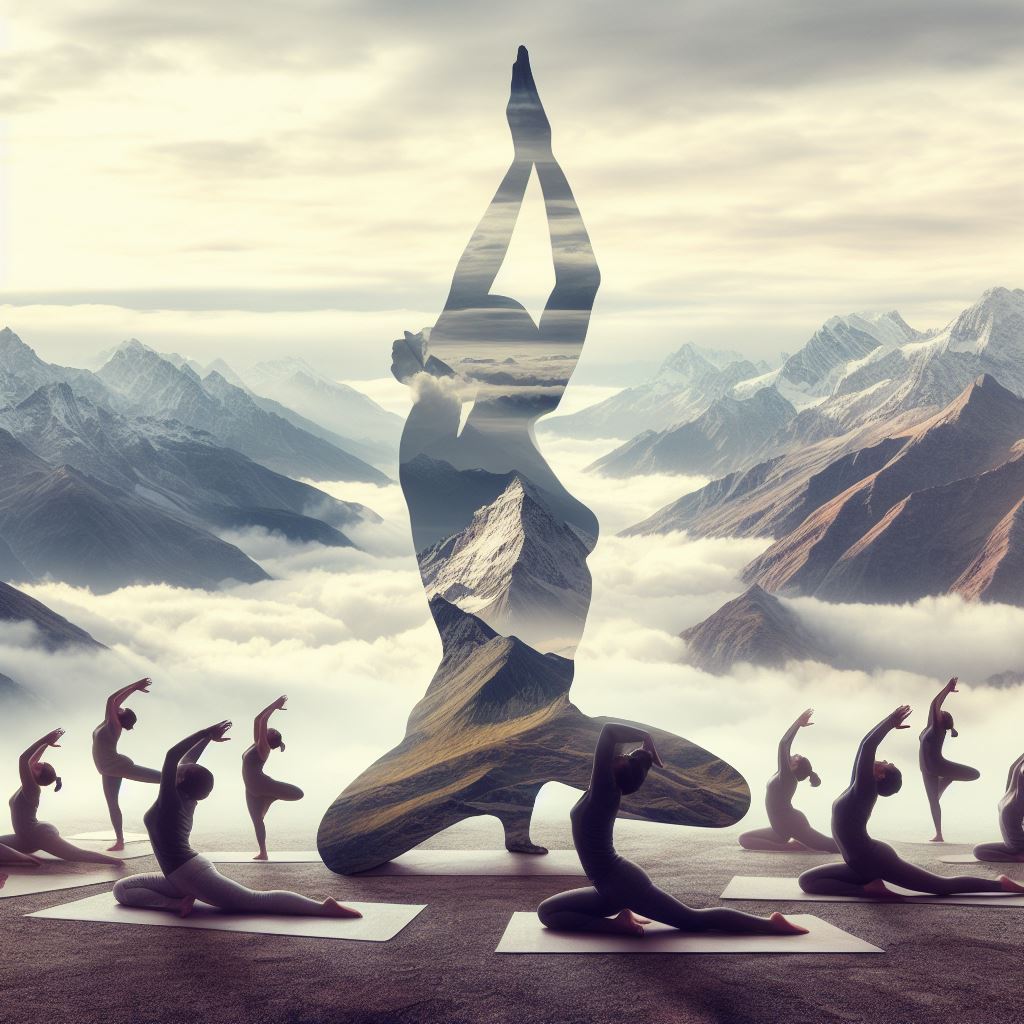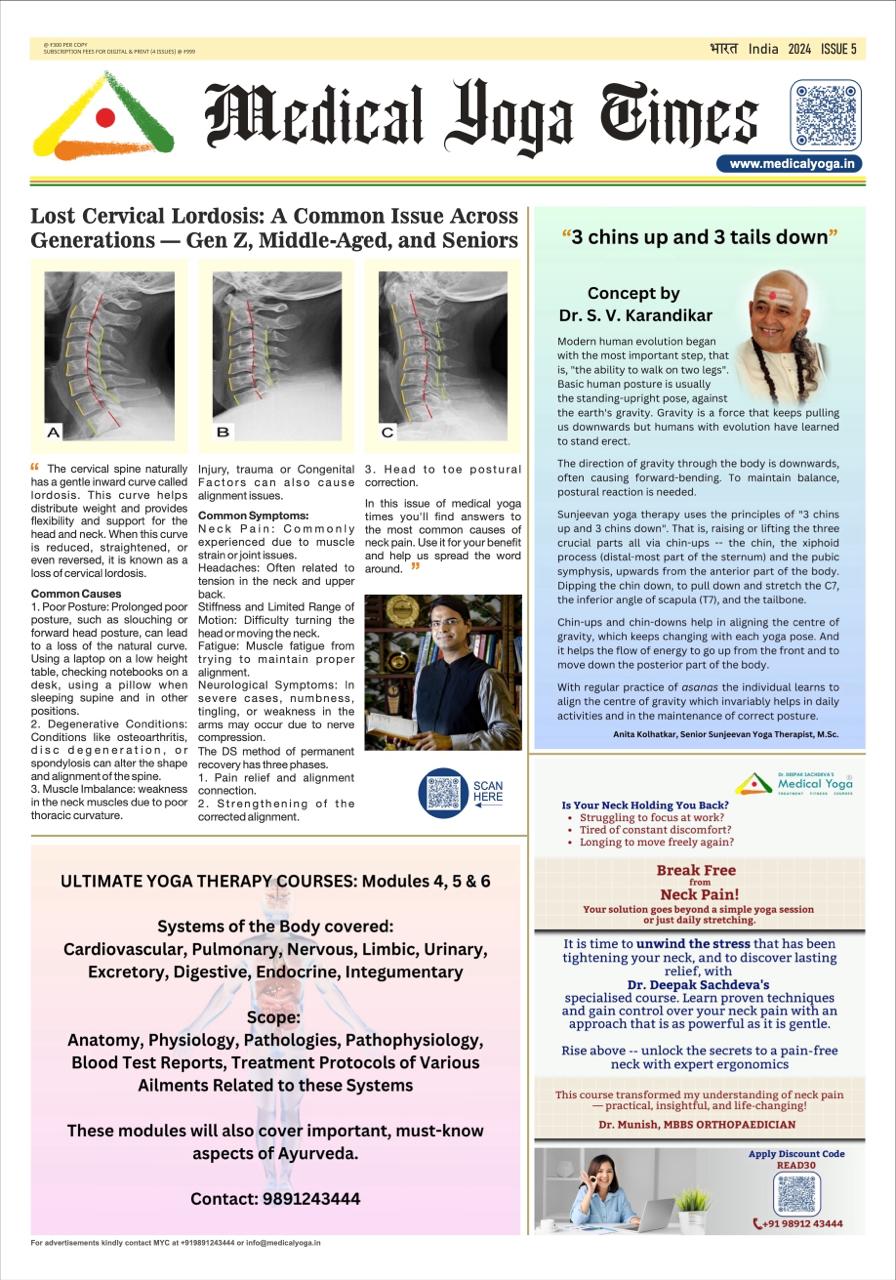Solutions for Cervical Pain

Common Causes & Solutions for Cervical Pain: FAQs with Dr. Deepak, Medical Yoga Expert
Q1: How can we avoid neck pain caused by prolonged screen usage?
A: The main issue is not screen usage itself but keeping the neck fixed in one position for long periods. When you read or watch something on a screen, your neck remains immobile, putting continuous pressure on the soft tissues. This can lead to dehydration and cracks in the cervical discs over time. To mitigate this, follow the DS 30-30 rule: every 30 minutes, take a 30-second break to move around. This simple habit can reduce neck problems by about 50%.
Q2: Can working from home on a bed or sofa cause chronic neck pain?
A: The problem is not the furniture but how it aligns with your spine. Whether you are working on a bed or sofa, ensure ergonomic alignment. If working on a bed, use a bed-table, (that looks like the top of a desk, of an appropriate height and support your spine with hard pillows maintaining a slight recline rather than a rigid upright position. Proper posture can prevent neck pain, regardless of where you work.
Q3: Why do some people wake up with neck pain, and how can they prevent it?
A: Your sleeping environment plays a crucial role. One-third of our lives are spent sleeping, so using the right mattress and pillow is essential. A soft fiber pillow is recommended, especially when sleeping on your side, as it supports the neck. Memory foam pillows are not recommended. Adjust your pillow to fill the gap between your neck and the mattress to prevent neck pain. There is no requirement of a pillow if sleeping straight on your back or on your stomach.
Q4: How important is ergonomic furniture for those who spend long hours at a desk?
A: Extremely important. If you spend a significant amount of time sitting at work, invest in a good chair and ensure your desk and monitor are at the correct height. It’s important to take care of these simple yet very important points:
-
Desk height should allow elbows to be at a 90-degree angle when typing.
-
Bottom of the monitor should be at or slightly above eye level. This helps keeping the neck straight and reduces strain
-
Chair's armrest should match your table height to support your elbows
Q5: Does stress contribute to neck pain, and how can it be managed?
A: Stress can exacerbate neck pain by causing muscle tension. The body’s fight or flight response in a stressful situation increases muscle tone, leading to stiffness. Manage stress through relaxation techniques such as yoga, meditation, or any activity that helps you unwind. Focus on the heart chakra and chest-opening postures to relieve stress.
Q6: Why do some people experience neck pain after gym workouts, and what can they do?
A: Neck pain after workouts, especially weight lifting, can occur if the muscles are already stiff or if exercises are performed incorrectly. Different people have different susceptibilities based on their daily activities. For example, an office worker with a sedentary lifestyle may have stiff neck muscles from prolonged sitting. If this person starts lifting weights at the gym without proper warm-up or muscle lengthening exercises, they can easily strain their neck. Before starting a gym routine, especially weight lifting, ensure you do muscle lengthening exercises for at least 10 days to reduce stiffness and prevent injuries.
Q7: How can frequent travellers prevent neck pain during long journeys?
A: Frequent travellers often face neck pain from long periods in cramped spaces, such as on flights or long road trips. To manage this, use a travel pillow effectively by wearing it from the front to support your chin and neck, which helps prevent your head from falling forward or sideways. Ensure the pillow is firm but not hard. For long drives, adjust your car seat to a 100-110 degree angle to avoid straining your neck. Also hold the steering from a slightly lower angle so that the elbows are relaxed and not strained. Also, take breaks every 1.5 to 2 hours during road trips to reduce stiffness and pressure on your neck. If you’re a passenger, sitting in the front seat can be more ergonomically supportive than the back seats.
Q8: Can improper nutrition contribute to neck pain?
A: Nutrition plays a role in overall health but is not a primary cause of neck pain. Deficiencies in vitamin D and calcium should be addressed, but most neck pain issues can be resolved through proper posture and physical therapy. Dietary changes can support overall health but are not a direct solution for neck pain.
Conclusion:
Cervical pain is a common issue in today's digital and work-from-home culture. By understanding the causes and implementing these practical solutions, you can significantly reduce the risk of neck pain and improve your overall well-being. Regular breaks, proper posture, ergonomic furniture, stress management, and a healthy lifestyle are key to maintaining a pain-free neck.
Article by
Rashmi Kedia
namaste@rashmiyoga.com




